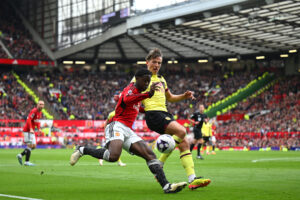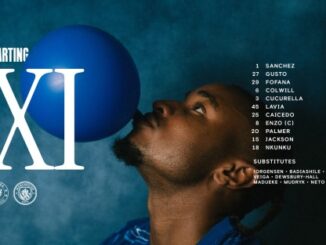- Old Trafford
Article Talk
Language
Watch
View source
This article is about the home of Manchester United F.C. For the cricket ground, see Old Trafford Cricket Ground. For other uses, see Old Trafford (disambiguation).
Old Trafford (/ˈtræfərd/) is a football stadium in Old Trafford, Greater Manchester, England, and the home of Manchester United. With a capacity of 74,310[1] it is the largest club football stadium (and second-largest football stadium overall after Wembley Stadium) in the United Kingdom, and the twelfth-largest in Europe.[3] It is about 0.5 miles (800 m) from Old Trafford Cricket Ground and the adjacent tram stop.

Nicknamed “The Theatre of Dreams” by Bobby Charlton,[4] Old Trafford has been United’s home ground since 1910, although from 1941 to 1949 the club shared Maine Road with local rivals Manchester City as a result of Second World War bomb damage. Old Trafford underwent several expansions in the 1990s and 2000s, including the addition of extra tiers to the North, West and East Stands, almost returning the stadium to its original capacity of 80,000. Future expansion is likely to involve the addition of a second tier to the South Stand, which would raise the capacity to around 88,000. The stadium’s record attendance was recorded in 1939, when 76,962 spectators watched the FA Cup semi-final between Wolverhampton Wanderers and Grimsby Town.
Old Trafford has hosted an FA Cup Final, two final replays and was regularly used as a neutral venue for the competition’s semi-finals. It has also hosted England fixtures, and matches at the 1966 FIFA World Cup, UEFA Euro 1996, the 2012 Summer Olympics and UEFA Women’s Euro 2022. The stadium also hosted the 2003 Champions League Final. Outside football, the stadium is used occasionally for rugby league. It has been the venue for the Rugby Football League’s annual Super League Grand Final, and previously Premiership Final, since 1987. In addition, it has been a host venue for five editions of the Rugby League World Cup – 1995, 2000, 2013, and 2021 (men’s and women’s).




Be the first to comment